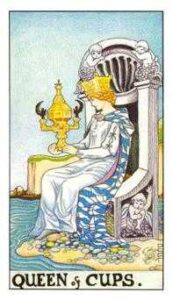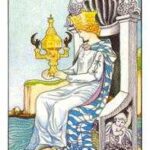

Living in a Culture That’s Lost Its Heart
“To learn how to fully live Eros makes a major contribution to the world around me, because this is a culture that’s lost its heart;


“To learn how to fully live Eros makes a major contribution to the world around me, because this is a culture that’s lost its heart;
“. . . when our left and right brain work in harmony, we begin to access our deeper Self and feel its guidance and support.

Those of us raised as Christians know this holiday is about a lot more than rushing about, partying and shopping, and many of us enjoy warm memories and nostalgic feelings this time of year. But why are the moments of love, joy and peace so difficult to find during the holiday season? Where do the feelings of exhaustion, anxiety, disappointment and depression come from? Why do we keep missing the point of Christmas? How can we recapture it?


Website design and development by Chad Lieberman
0 Responses
Thank you Jean – dreams are so important, if only we all knew and took the time and effort. Sometimes my dream-life can be desert-like in that I don’t always remember them but when I do I always record them. Tonight I’ll be asking The Dream Mother three times and with intention for a dream –
I’ve shared on social media ..
Thank you, Susan. I know! My Utopian Idealist thinks that if everyone would explore their dreams to acquire self-knowledge, the problems of the world would be solved! My Realist says, “Yeah, sure. That’s gonna happen! Not!!!”
But I do believe that for each person who makes the effort, a little more light is brought into collective consciousness. Thanks for your comment, and for sharing this on social media. I just checked out your blog and followed it!
Best, Jeanie
Thank you Jean … yes, I also think if we each took the path to self-knowledge instead of projecting our own shadows left right and centre out onto everything the world would be such a healthy and beautiful place!
Thank you for following my blog!
A lovely full guide to working with dreams – so informative and inspirational Jean, as always! Love the Asclepian temple by the way. I believe it was the son of Apollo who was deified here (Asclepius, the God of Medicine whose snake entwined sword is still medicine’s symbol today). How wonderful it must have been for communicants to be instructed by the priests, perhaps given some potion or other, then sent into the dreaming room to sleep and have a healing dream. The ancients knew their stuff alright! Thanks for sharing 🙂
Hi Roberta. Thanks for your kind comment. Yes, I’m pretty sure Asclepius (I so struggle to know how to spell this; when we were in Epidaurus this fall we saw it spelled at least 3 different ways!) was the son of Apollo. His Dream Temple/Chamber is in almost total ruins, but you can still see the round foundation. Unfortunately, they’ve covered over the hole in the center that leads down into the underground chamber where people slept at night to invoke healing dreams while snakes crawled over and around them and whispered dreams into their ears! I would have loved the opportunity to go down there and just sit for a while, but it was not to be. The ancients did, indeed, know their stuff! What a terrible shame that humanity gradually replaced it with surface knowledge that has no room for the Spirit of the Depths! Jeanie
How lovely to have been there! Yes it would be captivating to enter that space- not sure about the snakes though! Great to hear about your travels and experiences, making me ‘homesick’ for Greece! Though mainly been to the islands and Athens, but keen to see Delphi next 🙂
Yes, and we were led by Phil Cousineau, a multi-talented writer/mythologist, filmmaker who’s passionate about Greek mythology! He knew things the local guides had never heard of. If you ever go back, check out Sacred Earth Journeys on Facebook. They plan extraordinarily rich and soulful tours.
Will’do! Thanks so much Jean 🙂
Hi JeanThis is a terrific post. Sometimes, if the dream imagery is really “vibrant” I will consult a few books such as “A Dictionary of Symbols” by J. E. Cirlot mainly because it can stimulate thinking more deeply and broadly than otherwise. Only recently [in the past year] have animals [a bear, a horse and some dogs] begun to appear in my dreams. It seems important to me to explore more thoroughly the “new” in my dreams. All your suggestions are great and many have worked for me. Mary E. Martin http://maryemartintrilogies.com
Thanks, Mary. Coincidentally, my two favorite symbol books are Cirlot’s dictionary and the Herder Symbol Dictionary. They’ve been of enormous help. As one who’s been more absorbed in the life of the mind than the material world, I’m especially grateful for animal dreams. They remind me to attend to my body, my instincts, and the physical world around me. I appreciate your kind words. Jeanie
Dear Jean, I was successful the 2nd night, last night, re my dreams and applying ‘method’ to them this afternoon as you describe above. It has been extremely fruitful I wanted you to know. It has opened a rich mine … and I am extremely grateful – to you and the dream/s. Both dreams at different times of the early hours of the morning are linked even though they appear so different…I’m not sure I would have made the connection tenuous it may be.
I’ve summarised the 6 steps in the front of my dream journal and will be applying them rigourously –
Thank you again!
I also use Cirlot; The Penguin Dictionary of Symbols : Jean Chevalier and Alain Gheerbrandt, translated by John Buchanan-Brown as well as The Book of Symbols – Reflections on Archetypal Images, Taschen are invaluable source.
Yaaaay! I’m thrilled to hear of your success with your dreamwork! Way to go! (I guess I sound like a cheerleader, but I’m so pleased!) Even after all these years I almost never see any connection between dreams of the same night until I work with them, but there almost always is. And it still always delights me! Thank you so much for letting me know. You’ve made my morning, if not my day! I haven’t tried the two symbol books other than Cirlot you mention. I’ll have to check them out. Hugs, Jeanie
Thank you for the cheering! Greatly encouraging! 🙂
🙂 🙂
Hi Jean, and congratulations on speaking at the IASD conference, I so wish I would be there to hear you! Will any of it be recorded, do you know? (I am an IASD member, if that helps.)
Thanks so much for this clear process, it is very similar to what I use myself. The thing I struggle most with when helping others are steps 5 and 6. I can help people substitute meaning language in place of symbols, but it seems there is a kind of leap for many people when trying to apply this to everyday experience. Many people struggle to recognise the truth even when laid out before them. Do you have any advice here?
(I had a dream myself recently where the symbolism seems so clear, and yet I struggle to identify how exactly it applies to me – spefically with the tense of the dream message: is it insight to a current process? letting go of the past? Warning for how things are heading? It could be any of these…) I feel if I can wrestle some truth from this dream I may be able to help others with the process also…
Hi Amy, it’s so nice to hear from you. Thanks for the congrats! Wish you could be there too. I don’t know yet if it will be recorded. I hope so. I’d like a copy for myself. When I find out, I’ll announce it here so everyone can know.
I have always struggled with the same steps you do. Over the years it has come to me that the reason I don’t understand the waking life connection is because I’m not attentive enough to my feelings in my waking life. If I were, I’d recognize the same feeling in a dream. Essentially, the problem is a lack of mindfulness or awareness. Acquiring this expanding consciousness is essentially what the inner journey is all about. It’s why spiritual seekers take on regular practices like meditation and dreamwork.
It’s extremely difficult to bring light to our unconscious selves and our natural human inertia and fear of change contribute to our resistance to taking on this intimidating task. But it’s the Hero’s Journey and it’s the only thing that will ultimately satisfy a soul that is hungry for maturity and meaning. So the only thing we can do is keep on keeping on with our chosen practice (or perhaps adding another one), gaining tiny little insights step by step, until our practices starts paying off in big ways. And with commitment and perseverance, this will happen. Not always, and maybe not until long after midlife, but I assure you, the wait is worth it!!
My best to you,
Jeanie
This is fascinating. What a great format you have suggested for understanding and interpreting the dreams. I have the Cirlot dictionary (two actually as I bought a copy unaware I had it with a different cover) and The Book of Symbols (Archetypal…Taschen pub.). So I’ll start using these also. Thank you! And best wishes with the address you’ll be giving!
Thank you, Steven, for this and the other affirming comments you’ve taken the time to write today. I’m smiling as I write this because it feels so good to hear your enthusiasm and know you’ve been inspired by what I’ve written. This is why I write this blog, why I’ve kept it up, and why I’ll keep writing it for as long as I still have something to say! (Hopefully I won’t keep on after that. I’d hate to bore my readers!!) You and the many other wonderful like-minded people with whom I communicate here are a reward for setting out on this journey, and I thank you with all my heart.